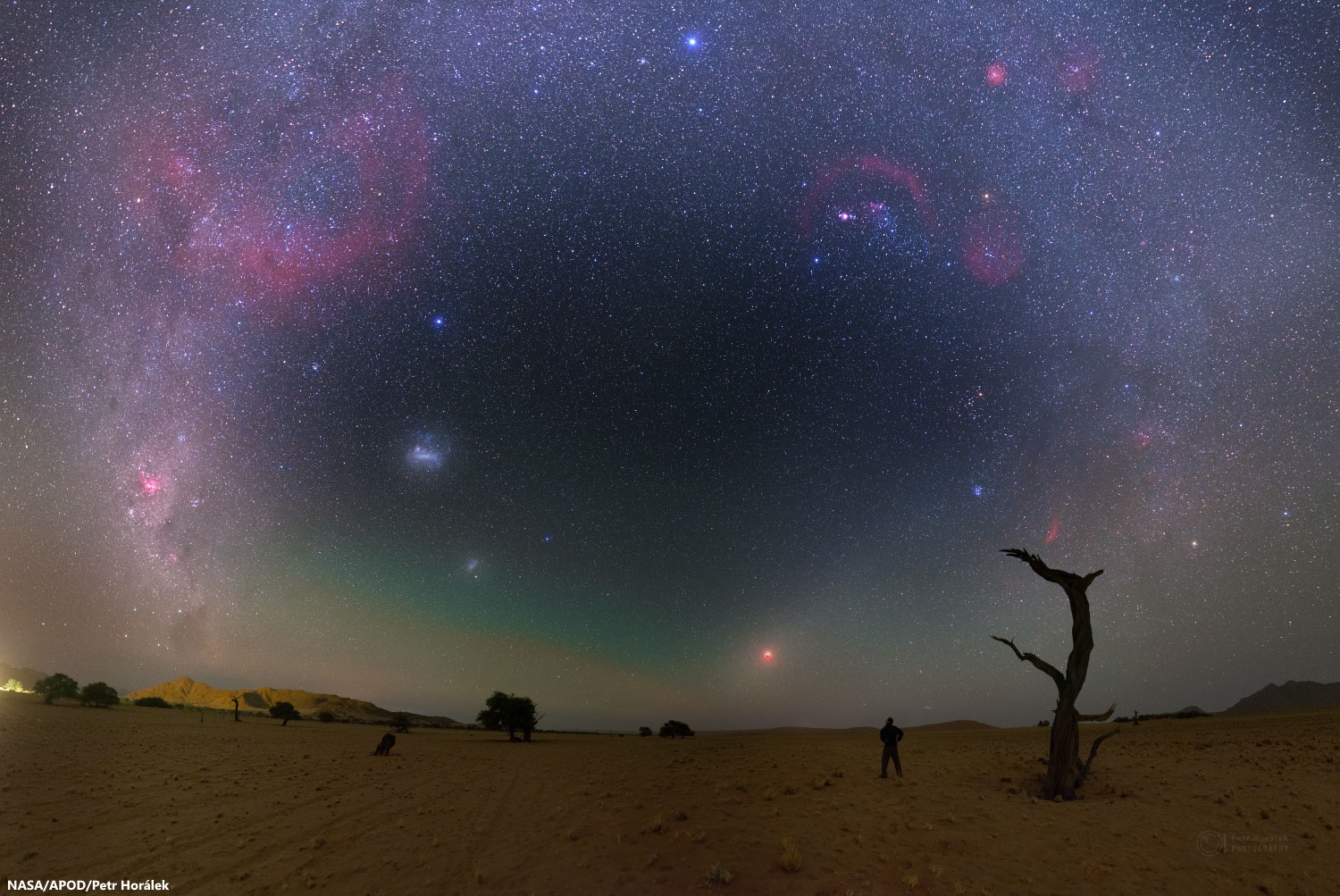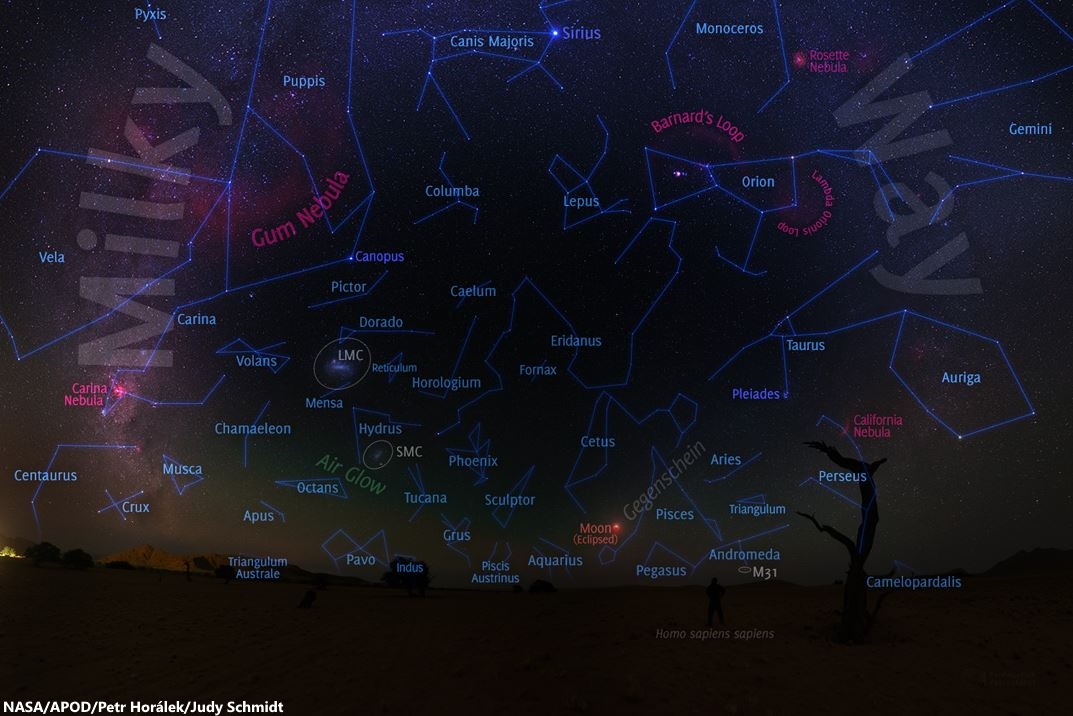 |
| Lunar Eclipse through elusive Gegenschein light from Namibia [Petr Horálek/NASA/APOD]. |
Explanation: Is there anything interesting to see in the direction
opposite the Sun? One night last month, there were quite a few things. First, the red-glowing orb on the lower right of the
original image is the full moon, darkened and reddened because it has entered Earth's shadow. Beyond Earth's
cone of darkness are backscattering dust particles orbiting the Sun that standout with a diffuse glow called
the gegenschein, visible as
a faint band rising from the central horizon and passing behind the Moon. A nearly horizontal stripe of
green airglow is also
discernable just above the horizon, partly blocked by blowing orange sand.
Visible in the distant sky as the blue dot near the top of the image is the star
Sirius, while the central band of our
Milky Way galaxy arches up on the image left and down again on the right.




3 comments:
Lunar Eclipse through elusive Gegenschein light from Namibia [Petr ... elunareclipse.blogspot.com
Awesome photos! I hope you keep posting. A lot of this stuff is pretty cool.
Know more about sirius star
Post a Comment